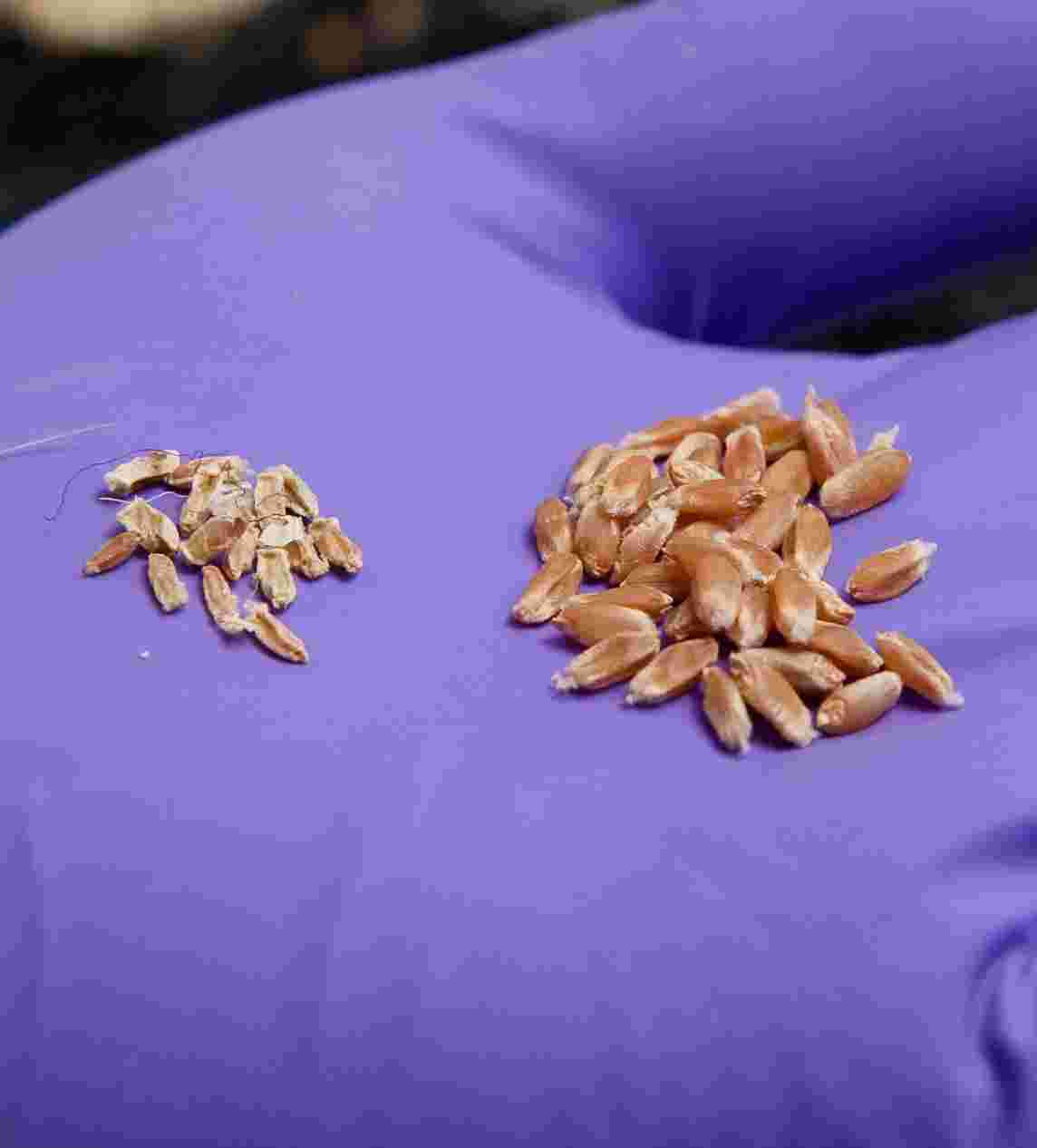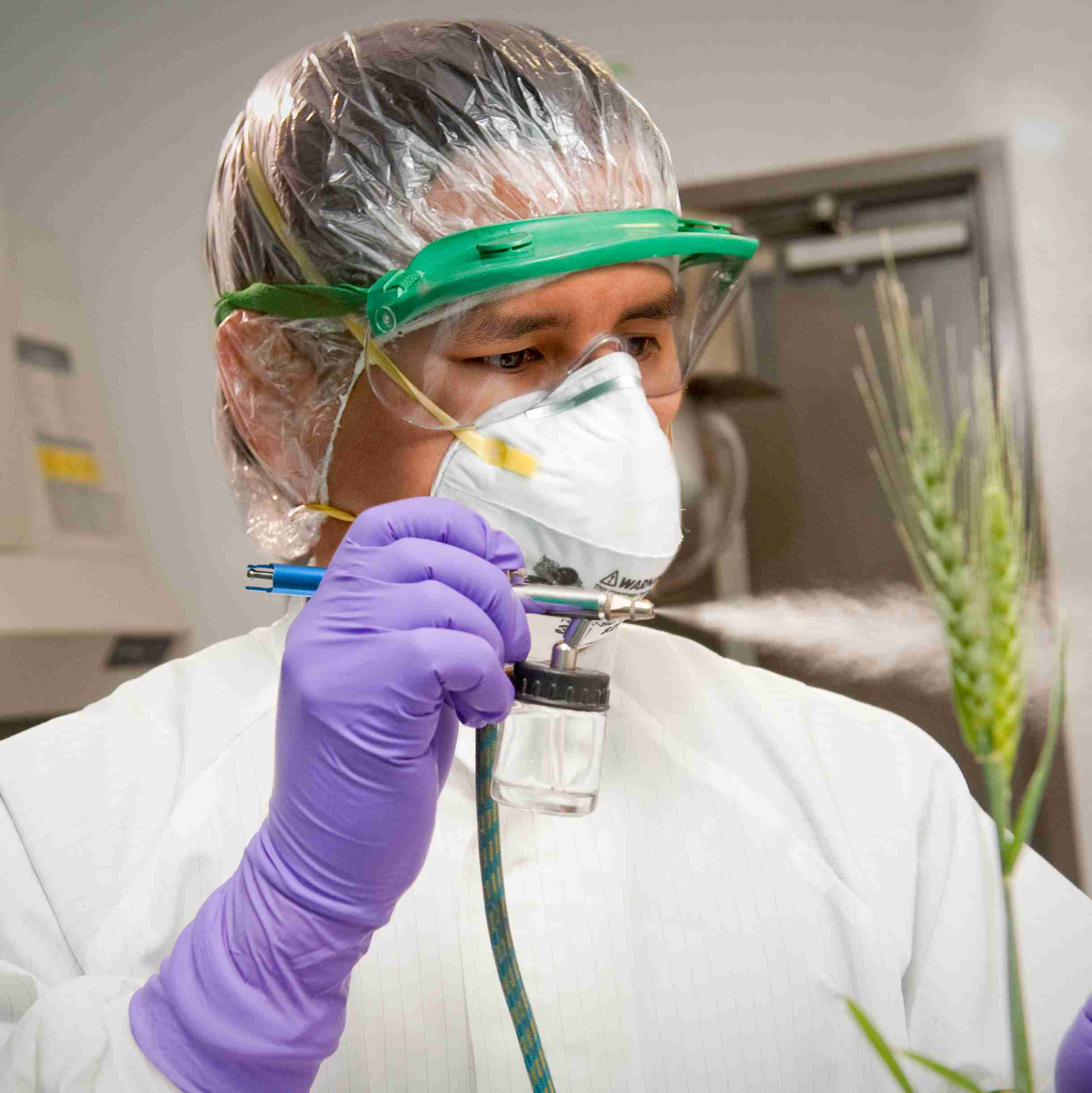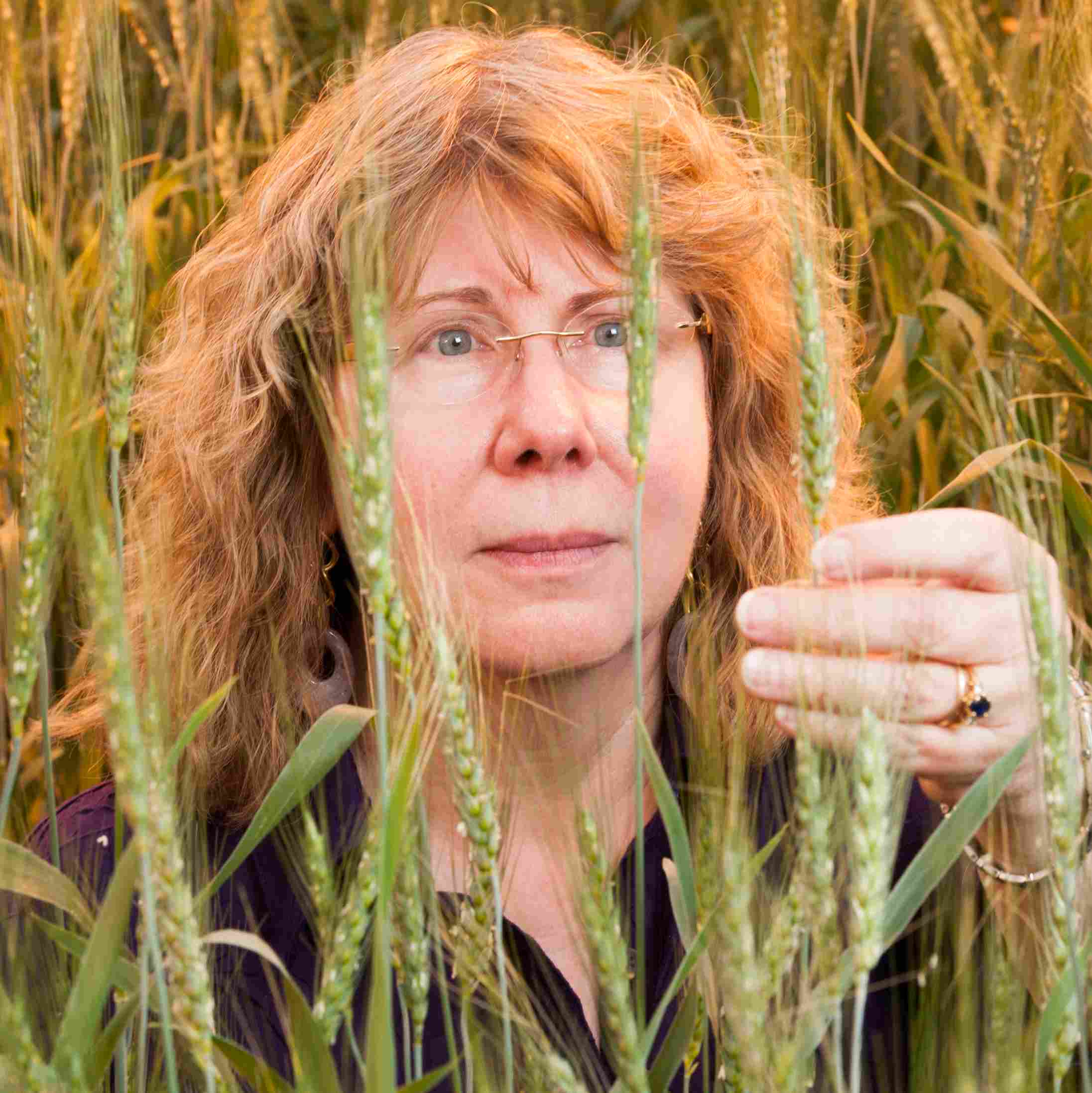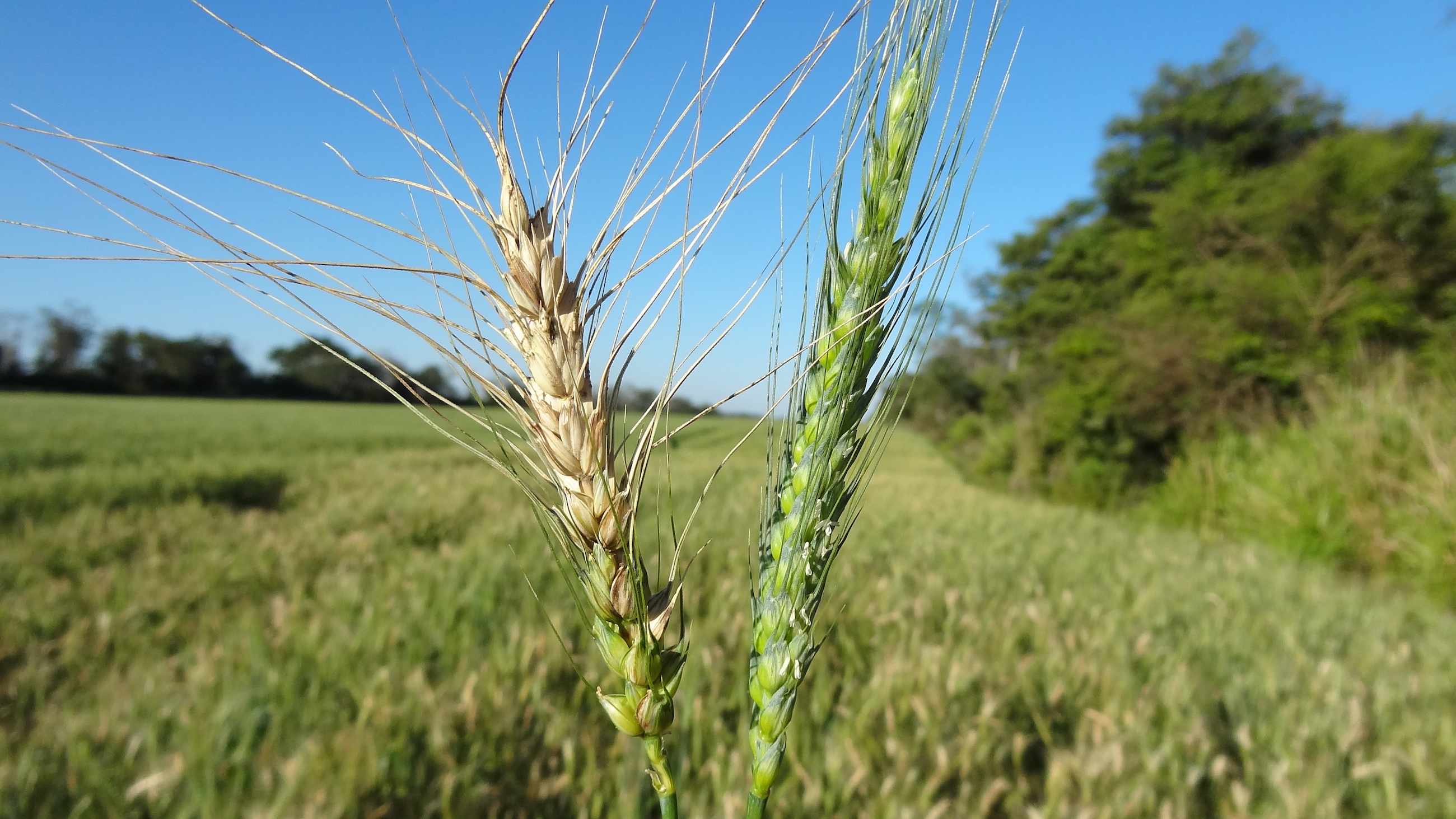Cereal Killer: Wheat Blast Haunts the Global Dinner Table
CORRECTION APPENDED
Alone in a field of deep green, the bleached yellow head of a single winter wheat plant jarred the experienced eye of an agronomist walking through a test plot in Princeton, Kentucky in May 2011.
DNA testing at the University of Kentucky confirmed the bad news: The plant had wheat blast, a disease that can drastically reduce a farmer’s yield, and for which little natural resistance is known. Magnaporthe oryzae, the fungus that causes it, had never been seen on wheat in the United States outside of a biosafety-level 3 lab.
It turned out to be an isolated incident, said Mark Farman, a plant pathologist who is director of the University of Kentucky Advanced Genetic Technologies Center. The fungus had mutated from a strain in ryegrass, which likely increased its natural ability to infect wheat. An unusually warm, wet spring had allowed the disease to build up significantly before harvest time.
This confluence of events has not been repeated since in the United States. “It was one plant, one head, one year,” Farman told me.
But it was still troubling. Any threat to wheat is a threat to the global dinner table. Wheat is the most widely grown crop on the planet and accounts for 21 percent of the world’s calories, according to the U.S. Department of Agriculture.
So wheat researchers around the world have long been on their guard. And in early 2016, they received a major jolt.

Shriveled wheat grains from a diseased plant, left, alongside healthy ones.
Visual: K-State Communications and Marketing Photography
Ghostly white heads appeared across widely scattered wheat fields in Bangladesh, at the edge of the great wheat-growing breadbasket of the north Indian plain. Plump grains that should have been arrayed in neat green rows at the top of each plant were now shriveled and dry. Reports came in from research stations, agricultural extension agents, and farmers across the country’s southwestern region. Often 20 percent of the crop was lost in affected areas, and in some fields, 100 percent. Bangladeshi wheat researcher Paritosh Kumar Malaker and his colleagues soon diagnosed wheat blast as the cause.
The outbreak was doubly frightening. For one thing, wheat blast on that scale had never appeared outside South America, where the disease was first reported in 1985. Wheat blast is thought to have originated in Brazil when agriculture expanded into areas already harboring isolated colonies of Magnaporthe on wild grasses. Unknown at the time, the colonies included a mutation that could infect wheat under the right conditions; those conditions arose when farmers planted a newly-developed, high-yield variety of wheat that only decades later was found to lack a gene resistant to blast.
No one in Bangladesh knew how wheat blast had jumped two oceans, but now it had a foothold on the Asian continent. In March, reports came out that wheat blast had surfaced in the Indian region of Bengal. Should the disease spread widely across Bangladesh and India, and into Pakistan, wheat blast could devastate a crop that feeds more than 1.5 billion people. And waiting to the north is China, the world’s largest wheat producer.
“The government of Bangladesh has been very proactive in taking remedial steps in mitigating the threat of this new disease in the region,” said Malaker, chief scientific officer at the Wheat Research Center at the Bangladesh Agricultural Research Institute in Dinajpur. The government advised care in importing wheat grain or seed, and imposed restrictions on seed purchased from the affected districts. To break the chain of infection, it also discouraged sowing wheat there while encouraging farmers to plant alternative crops like peas, beans, lentils, mustard, or maize, Malaker said. Bangladeshi scientists are also cooperating with colleagues from around the world to understand and control the epidemic.
Genomic analyses of Magnaporthe samples from Bangladesh found that they were clones of one another, indicating a common source, and were virtually indistinguishable from certain South American strains, according to Barbara Valent, a professor of plant pathology at Kansas State University and a leader of a team of researchers from the United States, Bangladesh, and the International Maize and Wheat Improvement Center in Mexico. (Molecular analysis by an independent group of researchers based in Europe, the Open Wheat Blast Project, came to the same conclusion.) Officially, the question of how blast arrived in Bangladesh remains unresolved, but some outside observers believe that grain imported for food was partly diverted for planting.
“One of the scary qualities of this disease is that it’s seed-borne,” said Valent, who has studied Magnaporthe on rice since the 1980s and in wheat since 2009. “You can have fungus in a healthy-looking seed, and [if you] move that somewhere else, [then] you’ve moved the fungus and you’ve moved the disease.”
Magnaporthe spores hide inside the outer layers of the seed, not on the surface, and so can’t be washed off. Symptoms appear on the head, not the leaves, so the base of an infected plant can be a vibrant green, while the top looks pale and shriveled because nutrients don’t reach the grains. In the field, windblown spores settle on the waxy outer surface of the plant, germinate, and develop an extension called an appressorium. This builds up pressure 80 times that of the atmosphere, punching through the plant’s surface and colonizing the first cell before moving on to its ill-fated neighbors.
A plant’s best defense against disease lies in its genome, Valent noted. About 100 major resistance genes for rice blast are known, but very few have been identified for wheat blast. That has become a major goal for an international group of scientists — field pathologists, epidemiologists, and molecular and genomic experts — who have been working together since 2009 to understand wheat blast and keep it out of other wheat-producing regions, including North America. Now called the Blast Integrated Project, the effort is funded by the USDA and led by Valent, with collaborators across the United States, South America, Europe, and now Bangladesh.


Two members of the project — Christian Cruz, a research assistant professor at Kansas State, and Gary Peterson at the USDA’s Agricultural Research Service at Fort Detrick, Maryland — are looking for varieties of wheat that are resistant to the fungus. Working in biosafety-level 3 laboratories at their respective institutions, they inoculated plants with strains of wheat blast from Brazil. Of the 418 wheat varieties tested, 74 showed significant levels of resistance. Wheat breeders looking at their results noticed that all the resistant varieties contained a segment of a chromosome derived from goatgrass, a wild ancestor of bread wheat. The segment, called the 2NS translocation, was already known to carry genes resistant to other diseases that attack wheat.
But if 2NS is a barrier, it’s a precarious one. “Breeders want to include more than one gene to provide backup for when the pathogen evolves ways around a single gene,” said Valent. “Ordinarily, moving a new variety from its initial cross in the greenhouse to the farmer’s field takes a decade. But fungal diseases like rust and blast mutate so quickly that resistance genes often fail within a few years after introduction.”
Cruz pointed out that genetic contributions from other species might harbor sources of help.
Given public concern about genetically modified organisms, scientists have been reluctant to use transgenic technology. The new gene-editing technique called Crispr-Cas9 may hold promise, though new disease-resistant crops could fall under government regulation.
As an epidemic requires a toxic combination of pathogen, host, and environment, Valent envisions controlling wheat blast with an integrated approach that goes beyond building resistance. Agricultural practices, like planting alternative crops for a time, can help. Farmers can plant a little earlier or later in the season to avoid the combinations of heat and moisture that favor blast development, but there are limits to that adjustment. Treating seeds with fungicides ahead of planting has shown some promise, although the most effective treatment is not licensed in the United States. Spraying fungicides on crops in the field seems to help, but their effectiveness has been incomplete. In addition, small farmers in countries like Bangladesh may find it hard to afford those alternatives.
Could wheat blast appear in the United States as it did in Bangladesh, in a load of foreign grain or in a more catastrophic repeat of the Kentucky incident?
The USDA’s Animal and Plant Health Inspection Service regulates the import of seeds of wheat and related species into the United States to keep out weeds and some wheat diseases, but not yet blast, although a possible pathway for Magnaporthe has already arisen. In 2010, American livestock farmers imported 268,000 tons of Brazilian wheat for feed, but there’s no evidence that the grain carried the fungus.
The threat of wheat blast is greater in tropical countries like Brazil or Bangladesh. However, the right environmental conditions here could favor growth of Magnaporthe, whether from a South American import or from local populations living on ryegrass, as happened that one damp spring in Kentucky. The ryegrass pathogen is genetically close to wheat blast, and ryegrass is planted on suburban lawns and as a cover crop on farms — often with wheat fields not too far away.
And then, of course, there’s climate change. “We know the climate is changing,” said Valent, “but it will be different in different places, and we don’t know what that will mean for different diseases.”
An unchecked new disease running through a major crop could lead to reduced grain supplies and higher prices, with all the economic and social consequences that would bring. Reining in wheat blast will require vigilance in the field and even more intensive work in the lab and greenhouse.
“This new disease is very damaging and poses a great threat to the wheat industry in South Asia,” said Naresh Chandra Deb Barma, director of the Wheat Research Center in Dinajpur. “Multiple interventions are needed to mitigate wheat blast. …We need to bring all resources to increase awareness about this disease.”
Aaron Levin is a science and medical reporter based in Baltimore.
CORRECTION: An earlier version of this piece incorrectly stated that Crispr-Cas9 is not regulated in the U.S. It’s the crops that may or may not be subject to regulation by federal agencies, not the gene-editing technology itself. The story has been updated to reflect this change, as well as to clarify that Christian Cruz of Kansas State did not specifically comment on the use of Crispr.











Comments are automatically closed one year after article publication. Archived comments are below.
Field pathogenomics and Open data sharing approaches helped us to determine the cause of Bangladesh wheat blast is a lineage of South American Magnaporthe oryzae within weeks (http://s620715531.websitehome.co.uk/owb/?page_id=828). It was an unprecedented success story of collaborative efforts and a rapid responses of 31 researchers from 4 continents to an emerging fungal disease in a new continent. Development of new blast resistant wheat variety using genome editing of S-genes by CRISPR/Cas9 technology are now in progress (http://gtr.rcuk.ac.uk/projects?ref=BB%2FP023339%2F1). Whole genome and transcriptome sequences of a large number of wheat blast isolates from Bangladesh are also freely available at the Open Wheat Blast website. We believe that open science and open data sharing approaches by all researchers fighting against the wheat blast would facilitate rapid mitigation of this catastrophic plant disease.
The following statement in the article is inaccurate and may lead others to violate laws and regulations in the United States: “But the new gene-editing technique called Crispr-Cas9 may hold promise, since it’s not regulated in the United States and thus is not officially a GMO technology.”
The use of a specific technique is not what is regulated in the US – it is often the intent and purpose of the modification as well as the presence of plant pest sequences which will trigger regulatory oversight of biotech products. Determinations on how some products of gene editing may be handled by regulatory agencies have not been completed. It is plausible that products of site directed nucleases may be handled differently by USDA-APHIS, FDA-CFSAN and EPA-OPP depending on the specifics of the product and its intended use.